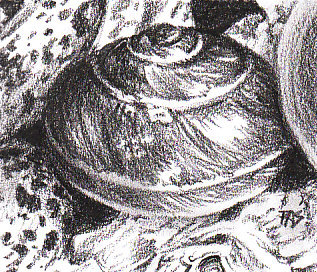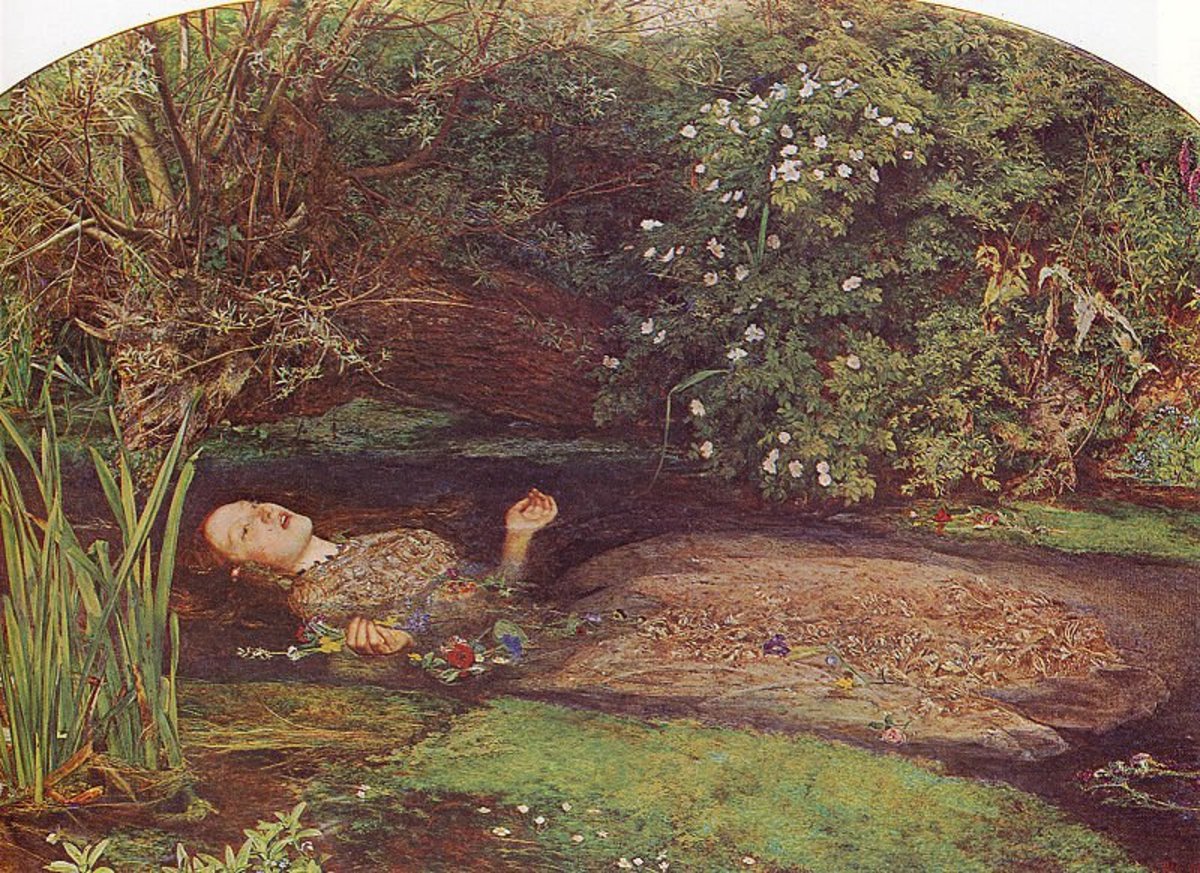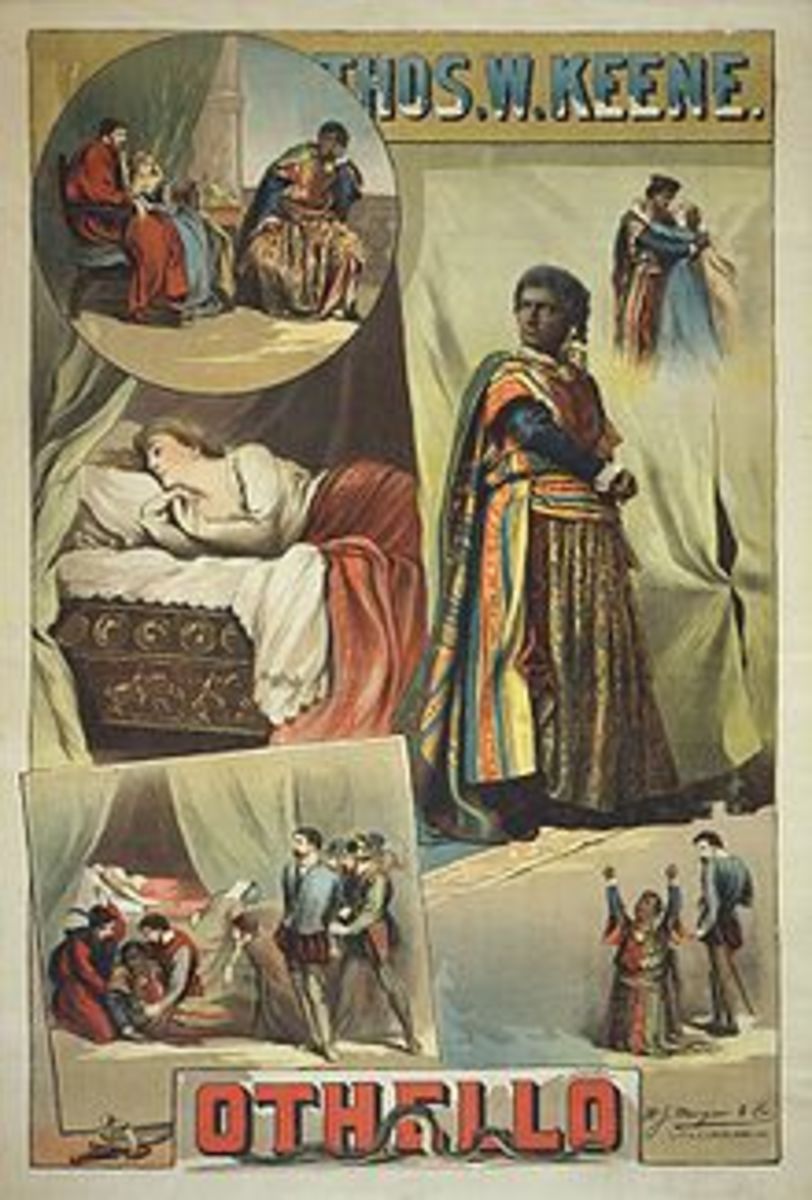We need photorealism and representational art in an age of photography.
Philippine Shells

Yes, we do still need realistic art even though photography is cheap and readily available.
glendoncaba wrote a Hub asking Do We Need Photorealism in the Age of Photography?
My answer to this question is that we need photorealism more than ever. Cameras have limitations, sometimes severe ones.
We're also no longer in the age of photography, with its expensive chemistry and darkrooms limiting it to professionals or people taking bad snapshots and paying for them to be developed. We're in an age of digital photography where my phone is a pretty darn good little camera. I use it often to snap reference photos for realist and impressionist art.
Photography, digital or the purist's film photography is an art medium in its own right. There's much that I learned from studying photos and photographers' articles and books. I improved my art by reading photography articles and a digital camera improved my photography no end because I didn't have any limit on how many images I could take with it. The biggest limit to photography is that no camera can ever capture what's going on inside my head. You can't snap photos of dragons in the sky or what your ideal woman looks like before you meet her. You can't take a video camera into one of your dreams and capture the way it looks if there's a vending machine offering time travel to the Carboniferous and something goes wrong with it to make tree ferns and giant dragonflies start erupting in that area of the mall. The mall itself didn't exist outside my head. Art has its own freedom and realistic representational art can create things no camera can ever capture. Digital photography and photography are mediums that add to the richness of images artists can produce -- many realist artists use cameras to take reference images, which is a great boon compared to trying to keep your canvas from blowing away out in the Grand Canyon. But ultimately a painting, a good painting, is edited by the painter's mind. Trees and mountains can be moved or eliminated. Entire houses vanish with a brush stroke or two or appear where no one has ever built. If you understand realism well enough to paint so accurately people think it's a photograph, you can put a zebra in your bathroom or paint tropical fish soaring over the lunar surface. You can paint things that artists could not bring their supplies down to see, photos capture things like the black smokers at the bottom of the ocean and artists may use black smokers within a painting about life because they've seen the documentary. But you can't take watercolors down there. Photography is a medium in itself. Art has many mediums. Digital art is a sketchbook with unlimited pages and a big range of colors and textures. I recently saw an article on a fellow using his iPhone to draw a cover for The New Yorker -- it was a good urban landscape manually drawn using a new technology. I dislike art that loses its meaning because it's completely nonrepresentational, or devolves into symbolism and has the distortions of bad drawing because the poor artist never learned how to render things accurately by hand. That happens sometimes and brilliant talents can be stunted, it happened more in decades past as many art schools are beginning to teach realism in modern mediums such as colored pencils, oil pastels and acrylics -- materials that didn't exist at the time cameras were invented.
Lemon on Pink Plate

#26 of 30 in 30 Days

Luxury and Necessity
Is photography needed either? Depends on how you define "needed." Is it a necessity to go on living? Not really. A person can survive deprived of either art or photography, deprived of any form of self expression or recording what they see. In fact if the person's not into art or photography, they may not even mind -- if they have music or books or something else that matters more to them as an individual.
Art and images of the world are not a necessity for survival.
They are important nonetheless. They are one of the things that makes us human. Visual art dates back to 30,000 years ago or more. Some of the cave painters were as good at representing animals now extinct as today's nature artists with all the new materials we have at our disposal. Some of today's painters are still using some of those cave painters' favorite pigments, we just have different binders as bear grease is hard to get these days.
Painting what you see will change how you look at the world.
That's something no camera can teach a person. You can snap ten thousand, ten million pictures of faces and not learn how to understand expression and shape of features as well as you would by taking a life drawing class. Artists look at the world as it is, unfiltered by symbolism. Realists especially have to learn to think past the things we know are there to see what really is there.
If there was a grape behind the lemon, I wouldn't see it. But if I painted it next to it peeking out, the rest of it would be implied behind the lemon. If I look at a still life I know has the grape, I might have painted the grape and moved it to get it into the picture instead of just showing what I can actually see.
Beginners will try to make sure every dog has four legs even if one leg is cocked up and behind a visible leg, unable to be seen. A good artist will leave that leg out if it doesn't show and instead draw the bunched-up muscles that show the difference between a dog standing that way and a three-legged dog standing that way.
The question has been answered by art history. It was much more relevant when cameras were new, asked honestly everywhere by artists who turned toward less representational forms of art in rebellion against some strictures on European art that were common at the time. It was a serious question for the average person and the academic.
Yet history answered it by a renewed interest in representational art, photorealism, hyper-realism and photo-assisted realism. Originality gets redefined in many art competitions as "the artist took the reference photos" rather than "don't work from a reference photo." Other competitions merely state the artist has to be certain of having the right to copy the photo in order to use it for a reference.
Colored pencil realism is tremendously popular. Manufacturers have responded by ever larger ranges of color and high quality lightfast products, the latest ones created to ASTM standards for lightfastness only recently developed. So at least one form of realism is cutting edge new art. I won't say modern because it's way past even Postmodernism.
Modernism is a historical art movement, it is behind us now and something that can be discussed, analyzed, looked at as something that existed and held the cutting edge in its time. It wasn't all that concerned with realistic representation of anything despite those limitations of camera and film. It went in many other directions, some of which affect and influence today's realists.
Those old masters aren't obsolete. Their work is being studied today and new types of realism are growing in relevance everywhere I look. One hyper-realist used a very small but high resolution digital photo he took and painted a very large mural -- one far more durable than any method of printing his image -- and he successfully captured a small JPEG artifact distortion in the mural as a fine point in his painting.
Have you noticed that you can see more shades of red or green than your scanner can reproduce? Sometimes a red, an orange-red, an orange and a bluish red will all flatten out in a scan or a print to the same blob of orangy red. Eye and mind can distinguish far more colors than any machine yet invented.
Even if it did, the machine wouldn't know what was in my head or know how to enhance the colors in the landscape, bring gold and gray and violet into the bark of the pecan tree outside my window. But the better it is, the easier it is to disseminate my art online and print it for wider distribution.
What happens when people learn to draw realistically is that they learn to see. The world becomes a far more beautiful and interesting place. When I first learned to do portraits, I can remember how faces looked and how I judged whether someone was ugly or not. Once I had learned to draw realistically, I found out how silly looking all the beautiful people are, with major flaws in their features and sometimes goofy exaggerated features. A person with perfect classical features often looked dull, not attractive.
That's when no one was ugly any more, that was when every human face became interesting and attractive. Architecture holds the personality of cultures and nations. Trees and plants, the natural world carries a new beauty when it's observed with an artist's eye. Skies that were boring become fascinating.
Good art brings this beauty back to people who aren't artists, heightening it and showing the things that the artist perceived.
To ask whether photography eliminates the need for realistic art is like asking whether the movies eliminated the need for live theatre. It didn't. Broadway is still thriving and live theatre is still as rich an experience as it's ever been. Or whether the invention of printing eliminated the need for calligraphy -- you can find calligraphy sets in every art or hobby store and learn the art more easily because the books are readily available.
Technology may enhance the process of doing art. It may offer new shortcuts for a realist, just as using a camera obscura may have been a handy trick some cave artists used because when it happened they could get a good sketch of something outside it. Artists used gridding and pantographs and other devices to copy sketches and transfer images back in the days of the old masters.
Now there's the convenience of printing out a photo reference in black and white to see its values, using photography as a sketching method. It still stops short of the process of realism because it's the artist's hand that winds up vanishing a tree and putting in a train that wasn't there in the photo.
Much of the photomanipulation that I've seen looks contrived. It's easy to see that it's seamed and it's awkward, it may have different light on its different elements, shadows are missing, things that I look for as an artist are inconsistent. Some artists use it to test compositions and create a preliminary reference -- and then correct all those problems in the sketch and the painting to the point that the result is good realism.
Life when it's stripped to bare necessity is often unlivable. Unless it's the deliberate conscious choice of an ascetic seeking a richer inner life or spiritual life, it becomes deprivation and shrivels the soul. Much that is technically luxury gets taken for granted as necessity. Much that's necessity for living a full rich life gets treated as luxury and reserved for the wealthy.
Another point about photography versus realistic art is its longevity. Encaustic paintings from ancient cities still shine with their original colors while photographs only a century old crumble and vanish. Digital photography is only as durable as the medium it's stored or printed on. Oil paintings from the Renaissance, egg tempera and casein paintings last a very long time. Ink paintings from thousands of years ago remain clear and beautiful today.
So do we want the art of our times to be treated as mere ephemera? Museums are wrestling with new conservation problems created by artists in Modernism who used plastics that weren't durable, pieces worth millions are degenerating and falling apart. Do the images created today deserve to last as much as those of previous generations?
Yes, you can print your digital photography on archival paper with archival inks. I encourage it, modern digital art and photography is real art and should be preserved. But don't limit the artist's choice of methods.
Modernism emerged as a rebellion against a strict hierarchy of academic subjects. Religious and mythological art was the highest category, then portraits, then landscapes and nature, last was still life -- and anything else was regarded as of no importance. The female form was idealized and very often the male form neglected as less esthetic. These ideas don't make sense today because we don't live in those times.
But to try to straitjacket art into emotional expressiveness or symbolism is laying the same kind of arbitrary strictures on today's artists, who are exploring possibilities as new and exciting as photography itself creates in technology. You can buy a phone that embeds a digital art program and use that iPhone to sketch serious art -- good enough paintings to grace the cover of The New Yorker.
You can use colors and pigments that never existed before in the history of man. Some of these replace less durable or toxic pigments common in decades and centuries past. Alizarin Crimson is beautiful till it turns brown. Permanent Alizarin Crimson doesn't turn brown and is just as beautiful.
The point of my article is -- don't tell artists what they can't paint. That stunts creativity and imagination. Instead, celebrate the newest movements in art and the joyous way they're rediscovering representational art in all these new forms as well as reviving the old. Mediums that used to be exclusively for the wealthy are accessible to most people now, so the world will have many more Old Masters creating wonderful traditional oils as meticulous as those done centuries ago because more of them have access to the materials.
Mythological subjects were dismissed as illustration a century after they were required as the highest form of art. Now we can see them true to life in movies by way of CGI, with more realism involved in their representation by digital media than was accomplished in all the history of European art. Dragons come to life and people do know what they look like.
So don't be afraid of realism and representational art. Here be dragons of the heart and they will fly as far as the human imagination can take them.





